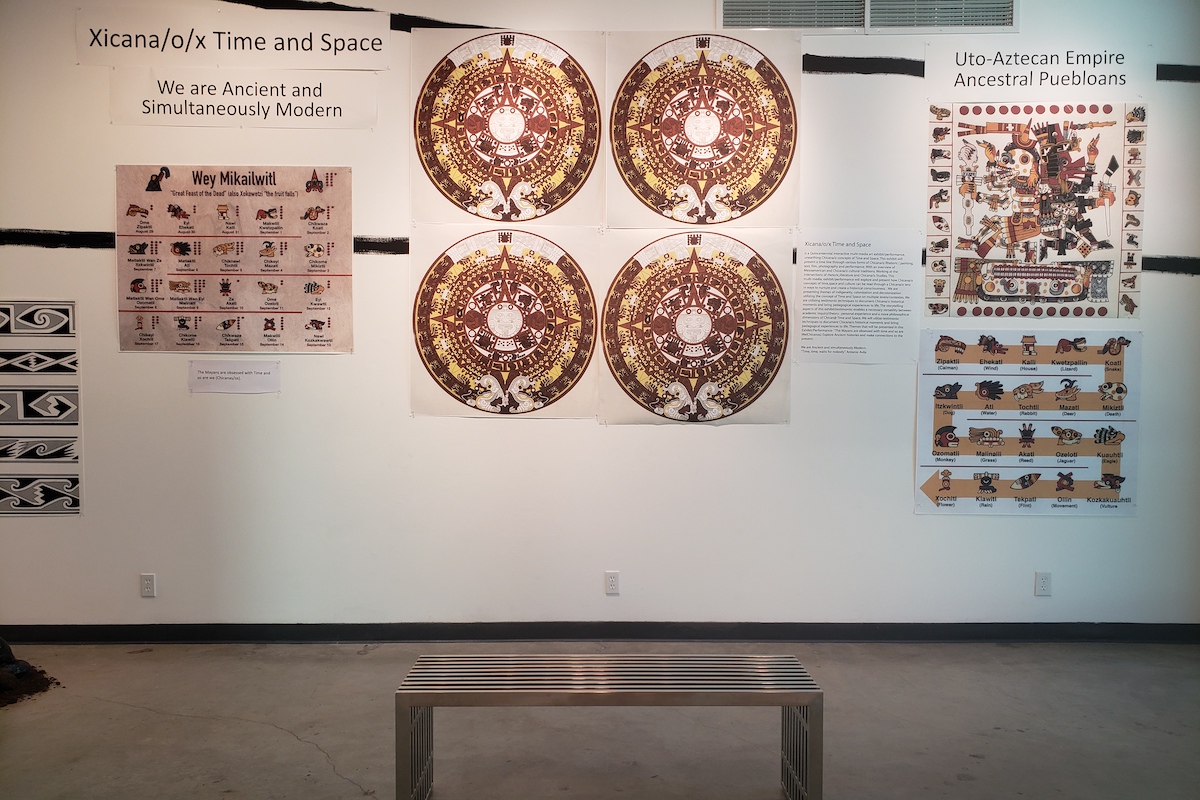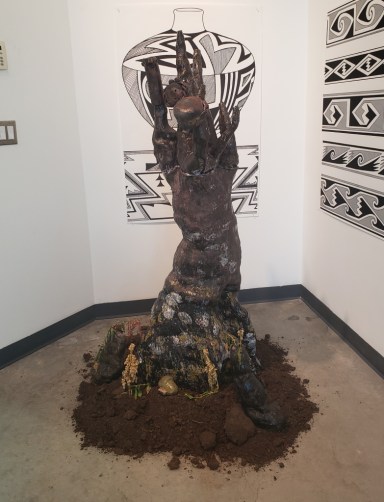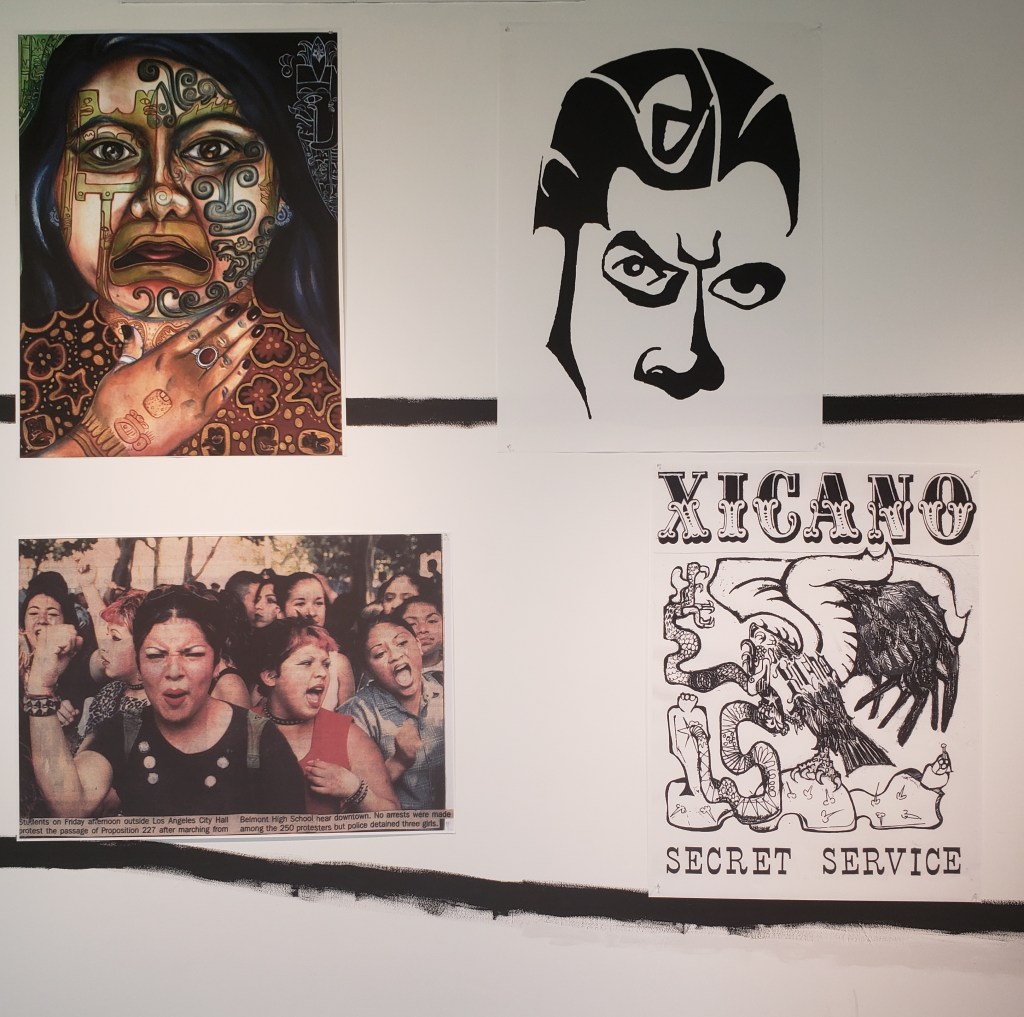Gallery with a View of Post-Mayan Time and Place
Santa Barbara City College Atkinson Gallery Opens Its Season with the History-Spanning ‘Xicana/o/x Time and Space’

The presumably peaceable and inarguably beauteous burg of Santa Barbara can be admired from multiple vista points around town, not the least of which is the impressive harborside and channel view from the patio of Santa Barbara City College’s Atkinson Gallery.

For the first exhibition of the gallery’s academic year, though, attentions turn decidedly — and thankfully — away from self-congratulatory hometown love and idyllic illusions about a paradisiacal beach town, devoid of closeted skeletons. Instead, the show offers a compacted history and cultural lesson about the stormy evolution and revolutionary aspects of Mayan/Mexican/Chicano/SoCal life going back to life before the European invasion.
Xicana/o/x Time and Space, curated by Dr. Thomas A. Carrasco, is a rough-hewn quasi-guerilla theater affair, with photographs, posters, paintings, and informative pithy texts laid out in telling timeline fashion around the gallery walls, from the Mayan era to today. Implicit in that historical equation and the texture of cultural and fine-art life in the now are more inclusive acceptance of previously seldom-heard perspectives and the deeply embedded heritage of “others.” Cases in point: this current Atkinson show and the upcoming MCASB show by Cameron Patricia Downey, an “anti-disciplinary” artist who gave a lecture at SBCC last week.
Xicana/o/x Time and Space is also linked to the seventh SoCal-based series of exhibitions under the “SUR:biennial” rubric, which seeks “to explore the complex notions of globalization and exchange that take place in the ambiguous geographical, cultural, and artistic borderlands between Southern California and the broader South.”
In keeping with the respect paid to the chronology and place of the cultural diaspora, and the sense that, to quote a wall text, “we are ancient and simultaneously modern,” the exhibition is presented as a truncated history, read from left to right around the room. First stop: the sole sculpture in the show, Joelle Estelle Mendoza’s large, ruddy, and ritualistic ceramic work “mycorrhizal reach,” its rootsy character guiding us into a wall devoted to intricate Mayan designs from the Uto-Aztecan Empire, often with time orientations encoded into the imagery.
Moving through history, the tragedy-laced story touches on 300 years of colonization, the Mexican nation-state, the Mexican Revolution, and the 1860-1940 industrialization and labor exploitation in the Southwest. On a note of evolving cultural solidarity, there were the self-defining cultural statements of the Pachucas/os movement of the ’40s through the Chicana/o flourishing and self-identifying movements through the evolving present.
Relevant to activist life in California are references to the United Farm Workers of America struggle launched by Cesar Chavez, Dolores Huerta, and others in the 1970s, a beacon of hope amid dire working conditions for farmworkers. One poster features the familiar bold red logo below the affirmative chant of “Sí, se puede” (roughly, “Yes, we can!”). Another poster takes a more sharply satirical turn with a facsimile of a certain popular branded raisin box, but reading “Sun Mad Raisins, unnaturally grown with insecticides, miticides, herbicides, fungicides.” The blissful maiden we expect is replaced with a skeletal face, more suitable for Día de Los Muertos than your local grocer’s shelf.
Another poster is emblazoned with the cryptic organizational moniker “Xicano Secret Service,” an art and performance aggregate featuring curator Carrasco, Susan Carrasco, and Elias Serna, who performed at the exhibition’s opening in early September.
Xicana/o/x Time and Space is one of those deceptively modest-seeming shows that shakes up complacency about the essence and deeper meaning concerning where we live. Outside of the SBCC’s Humanities building, the postcard view of our famed waterfront seems to be inflected with an undertone of buried or half-ignored histories in our midst.
The exhibition is on view through October 18. For info and gallery hours, see gallery.sbcc.edu.







You must be logged in to post a comment.